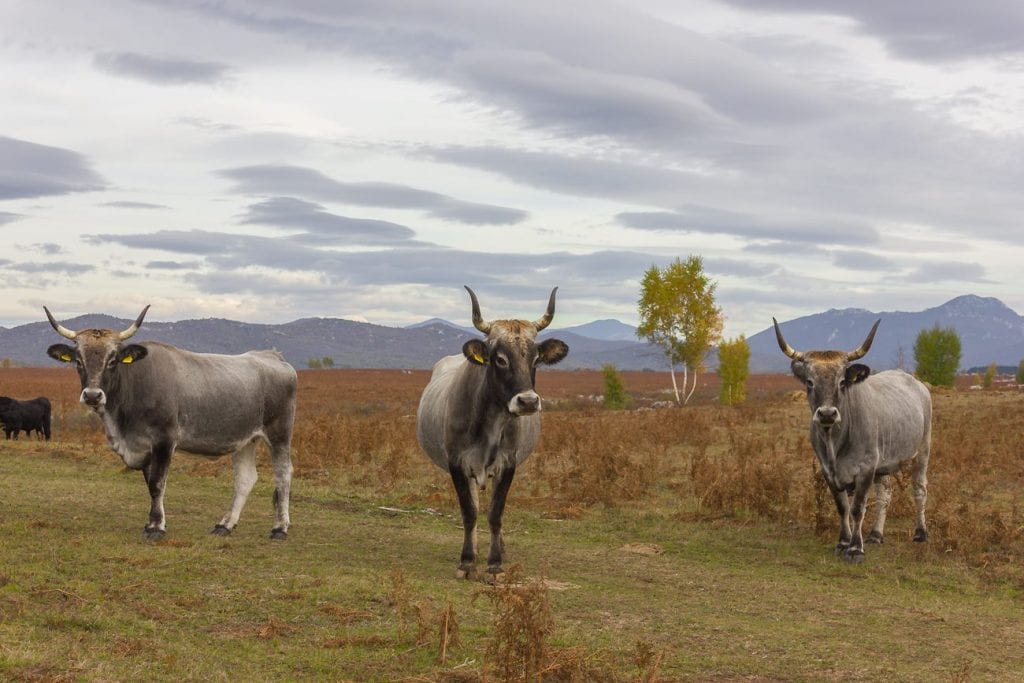Velebit, a dramatic mountain chain right on the Adriatic coast in Croatia, is one of the wildest areas of the whole Mediterranean.
Velebit is one of the most important natural areas in the Balkans. It hosts two national parks, a biosphere reserve and several wonderful old-growth forests, deep canyons, ancient open lands and exciting wildlife like Balkan chamois, red deer, brown bear, wolf and lynx.
A region where wild nature is really coming back thanks to one great project and an inspiring team behind it.
The members of the project “Rewilding Velebit” team are focusing their efforts on helping local partners to make Velebit considerably more wild than before.
“Our mission is to make Europe a wilder place, with more space for wild nature, wildlife and natural processes. Protected areas already exist in our area, rich wildlife, large intact forests, a high concentration of biodiversity, relatively intact wild landscapes, wild rivers, and large areas of mosaic vegetation largely shaped by old traditional grazing practices are a good start for nature conservation work. Many local inhabitants have moved out of the area towards the coast. As a result, many areas of this region are now characterised by land abandonment, rural exodus and fading cultural tradition. Rewilding Velebit is working with its partners to transform challenges into opportunities. Here rewilding is offering a fresh approach to wildlife management and underpinning the development of a local nature-based economy, creating a wildlife and ecological corridor in the Velebit mountains. Wildlife watching hides are constructed and new ones will be built in future to create job opportunities benefiting the local community. Our wish is to connect the beautiful untouched nature with nature protection for mutual benefit and further protection.”, said the members of the team for The Plitvice Times.
The tourism infrastructure along the coast is very well developed with hiking trails, smaller overnight cabins, larger dormitories, professional visitor centres and different levels of quality lodging.
A new wildlife watching venture saw the construction and opening of two wildlife hides in this reserve in 2016, with two more to be opened in 2018.
These will benefit the local community through job opportunities and boosted tourism income. They represent the first step in developing the area’s vast potential as a sustainable nature tourism destination.
“For each rewilding area we developed an inspiring vision that shows our ambition for the next ten years. Together with our local partners, we work to make this vision a reality.”
The area thereby provides new sources of income and pride for the people who live here, as well as for Croatia as a nation. Velebit inspires people in adjacent areas that have similar natural settings, to also approach their problems and opportunities using rewilding as a tool.
In collaboration with the University of Zagreb’s Faculty of Forestry, the Rewilding Velebit team members are working to have the Ramino Korito old-growth beech forest, located in the southern part of Velebit Mountains, designated a special woodland reserve.
Ramino Korito is an important ecological hotspot in the growing network of protected forests in the Rewilding Velebit area, and its designation will highlight its rarity and biological value. This, in turn, will positively impact the number of visitors and thereby boost the area’s nature-based economy.
On the Lika Plains, a scenic grassland located in the foothills of Velebit Mountains, Rewilding Europe is working to reintroduce wild and semi-wild grazers; the animals live in social herds without direct human management and are steadily moving toward self-sufficiency. Since it began in 2015 the project has doubled in size and now extends across 1000 hectares.
The restoration of grazing on the Lika Plains is already changing the landscape, with the first signs of dynamic mosaic habitats now visible. The comeback of wild herbivores is also supporting the restoration of trophic cascades, as carnivores such as wolves, bears ansd lynxes prey on them. Predation by wolves is already evident.
The project has managed to increase wildlife numbers by decreasing hunting pressure, and have influenced opinion and public policy through field activities in close collaboration with local entrepreneurs, the hunting community, academic institutions and the national government.
These are just some of the projects and there is still much to be done, but there is no doubt that “Rewilding Velebit” and all the members behind it are doing a great job to achieve their goals to make Velebit more wild and all of us more proud.
PHOTO: Nino Salkić






























